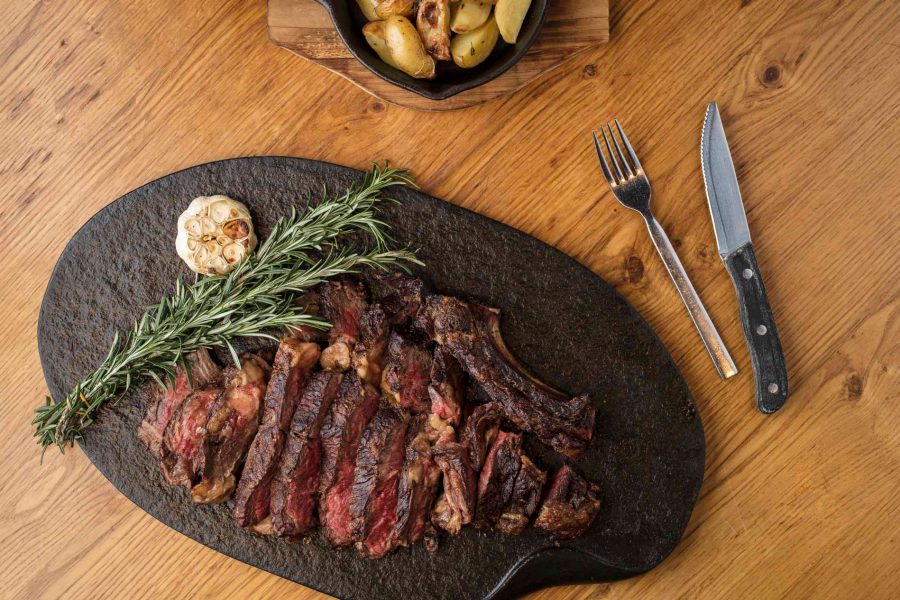World’s best dishes: Basque Steak

In Basque, txuleta (pronounced ‘chuleta’) means ‘meat chop’. It is a speciality of the region – although traditionally the cattle is actually reared elsewhere, in Galicia, further along the northern Spanish coast. These cattle, which have lovely blond coats, are reared on a strict diet of high-quality grass for around 15 years, which increases the flavour of the meat and causes the beautiful marbling effect.
In summer 2015, I travelled to the Basque region (where my mum is from) to rediscover the roots of what some claim to be the best cooking in Spain. I was looking for the freshest txuleta steak.
I was able to try some great pieces of meat. But let me direct you to a little restaurant called Casa Julian in a tiny village called Tolosa. The city of San Sebastián, just north of the village, is well-known for its high concentration of Michelin-starred restaurants: but with Casa Julian, you wouldn’t even notice it unless you knew it was there.
There, Chef Mathias cooks his ox txuleta – always the same cut from the same breed of cattle – to order in front of every diner. The hefty steaks are topped with a healthy layer of coarse salt that is scraped off before serving. The salt is essential in the preparation of the steaks, giving the meat a charred exterior when grilled and leaving the centre just above rare. It’s cooked for much longer than usual and over a lower heat, so it takes about 15 minutes for the eight to 10 centimetre-thick slab of beef to be cooked properly. It’s the best steak ever.
At The Optimist, we serve txuleta in the same traditional way. We cover the steak in salt before grilling, which draws the blood and moisture to the surface and heightens the flavour. Then it’s sliced and served on top of a hot stone.
Manuel Palacio is the co-founder and chairman of Pirata Group . Hero image: Mike Pickles
More inspiration
Spain travel information
- China – the Chinese Mainland, Hong Kong SAR, Macao SAR and Taiwan Region
- Hong Kong SAR - English
- Chinese Mainland (China) - English
- Taiwan, China - English
- 香港特別行政區 - 繁體中文
- 中国內地 - 简体中文
- 中國台灣 - 繁體中文
- Africa
- South Africa - English
- Asia
- Bangladesh - English
- Korea - English
- Singapore - English
- Cambodia - English
- 한국 - 한국어
- Sri Lanka - English
- India - English
- Malaysia - English
- Thailand - English
- Indonesia - English
- Maldives - English
- ประเทศไทย - ภาษาไทย
- Indonesia - Bahasa Indonesia
- Myanmar - English
- Vietnam - English
- Japan - English
- Nepal - English
- Việt Nam - tiếng Việt
- 日本 - 日本語
- Philippines - English
- Australasia
- Australia - English
- New Zealand - English